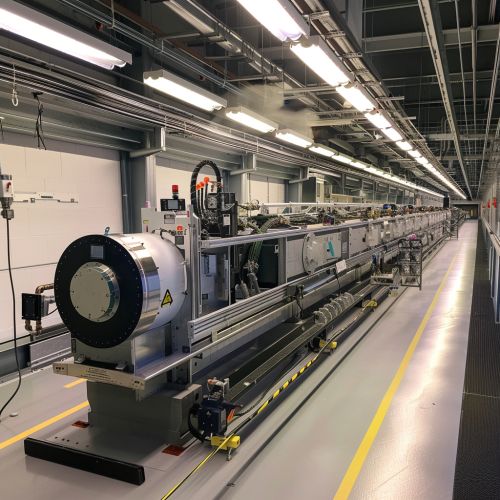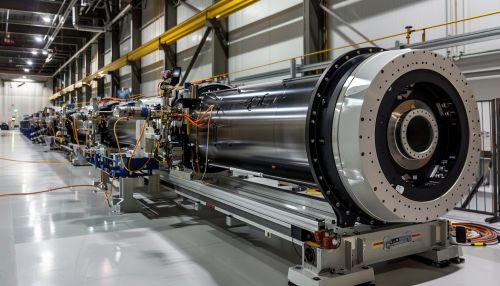Linear particle accelerator
Introduction
A linear particle accelerator (often shortened to linac) is a type of particle accelerator that accelerates charged subatomic particles or ions to a high speed by subjecting them to a series of oscillating electric potentials along a linear beamline. The principles for such machines were proposed during the 1920s by Gustav Ising, Rolf Widerøe, Leó Szilárd and others. In 1928, Rolf Widerøe demonstrated the principle in the acceleration of protons.
Design and Function
The design of a linac depends on the type of particle that is being accelerated: electrons, protons or heavy ions. The particle source is ionized in the case of protons or heavy ions. A linac uses the electric fields of radio-frequency (RF) cavities, rather than the magnetic fields of the earlier cyclotron and synchrotron designs, to increase the energy of the particles. The use of RF cavities allows the linac to work in a continuous rather than a pulsed mode, leading to a high average beam power.
Components
The main components of a linac include the particle source, the RF cavities, the beam transport system and the beam dump. The particle source releases the particles that are to be accelerated. The RF cavities accelerate the particles and the beam transport system guides the particles along the beamline. Finally, the beam dump absorbs the high-energy beam.
Applications
Linacs have many applications, they are used in medicine for radiation therapy and in industry for materials testing. In science, linacs are used as particle injectors for higher-energy accelerators, and also used directly to achieve the high energies required for experiments in nuclear and particle physics.
See Also


